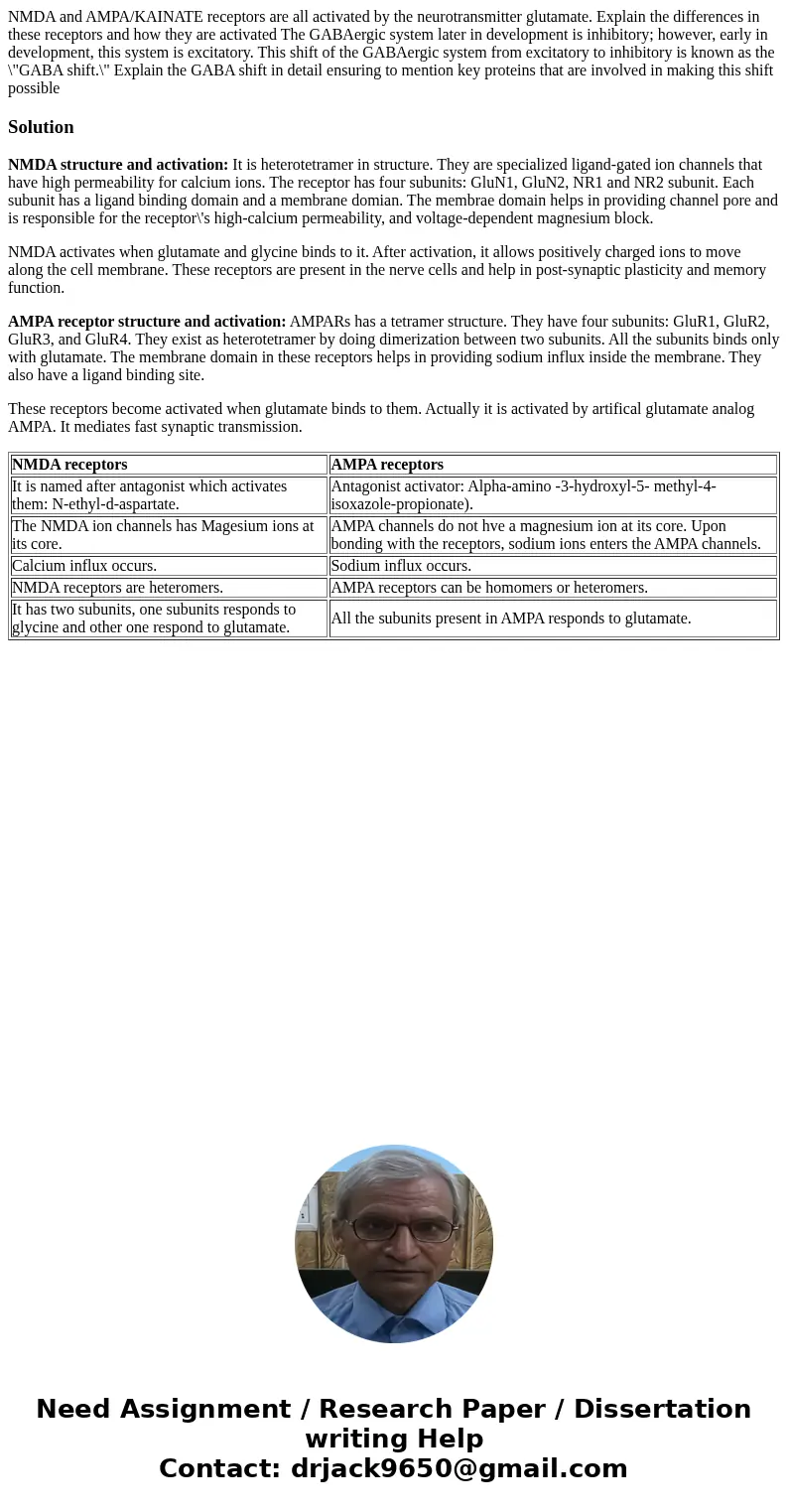NMDA and AMPAKAINATE receptors are all activated by the neur
Solution
NMDA structure and activation: It is heterotetramer in structure. They are specialized ligand-gated ion channels that have high permeability for calcium ions. The receptor has four subunits: GluN1, GluN2, NR1 and NR2 subunit. Each subunit has a ligand binding domain and a membrane domian. The membrae domain helps in providing channel pore and is responsible for the receptor\'s high-calcium permeability, and voltage-dependent magnesium block.
NMDA activates when glutamate and glycine binds to it. After activation, it allows positively charged ions to move along the cell membrane. These receptors are present in the nerve cells and help in post-synaptic plasticity and memory function.
AMPA receptor structure and activation: AMPARs has a tetramer structure. They have four subunits: GluR1, GluR2, GluR3, and GluR4. They exist as heterotetramer by doing dimerization between two subunits. All the subunits binds only with glutamate. The membrane domain in these receptors helps in providing sodium influx inside the membrane. They also have a ligand binding site.
These receptors become activated when glutamate binds to them. Actually it is activated by artifical glutamate analog AMPA. It mediates fast synaptic transmission.
| NMDA receptors | AMPA receptors |
| It is named after antagonist which activates them: N-ethyl-d-aspartate. | Antagonist activator: Alpha-amino -3-hydroxyl-5- methyl-4-isoxazole-propionate). |
| The NMDA ion channels has Magesium ions at its core. | AMPA channels do not hve a magnesium ion at its core. Upon bonding with the receptors, sodium ions enters the AMPA channels. |
| Calcium influx occurs. | Sodium influx occurs. |
| NMDA receptors are heteromers. | AMPA receptors can be homomers or heteromers. |
| It has two subunits, one subunits responds to glycine and other one respond to glutamate. | All the subunits present in AMPA responds to glutamate. |

 Homework Sourse
Homework Sourse